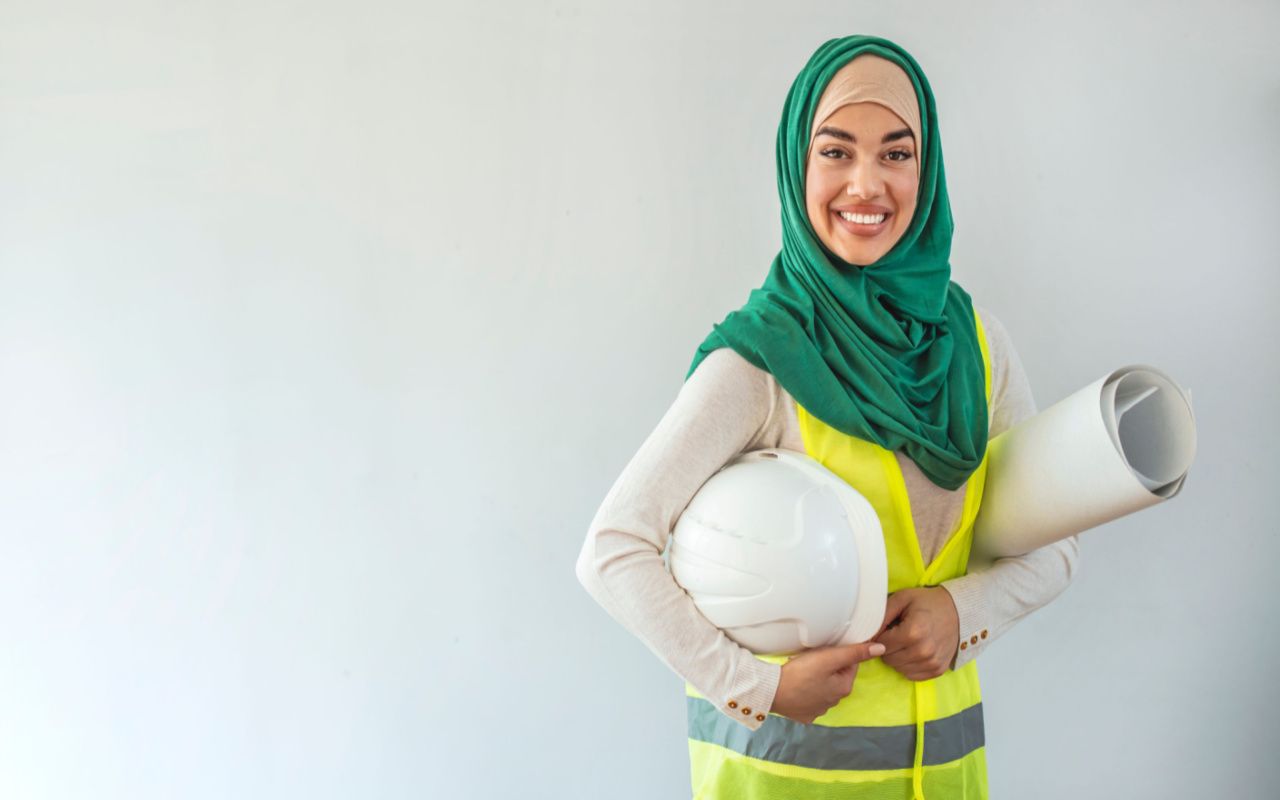While the number of women working in construction has remained consistent for nearly two decades, a recent survey of over 500 women in the industry reveals a largely positive experience.
Women represent just 11% of the construction workforce, which means that around 1 million women are working in the industry as of 2021. Both the number of women and their percentage share has remained largely unchanged since at least 2003 according to the Bureau of Labor Statistics.
Despite working in a male-dominated field, however, the majority of women in construction report having opportunities for advancement, feeling valued for their contributions and enjoying their jobs. Nonetheless, problems remain for some women, who note a lack of mentors and the negative effects of an “old boys’ club” on their workplaces.
Women are a key part of the construction workforce, and executives who understand how to support career growth, stamp out harassment and listen to diverse voices are likely to see the fruits of their efforts.
Optimism about the future focuses on opportunities for growth
Overall, 80% of women surveyed who work in construction say they love their job—and more than three-quarters of them say the role of women in construction is changing for the better. These women work in diverse roles, including administration, accounting, credit management, sales, labor, skilled trades and executive leadership.
The construction industry appeals to women for a variety of reasons, from opportunities for problem-solving to the joys of working on building projects that provide real-world benefits to their communities.
Others say they chose the field specifically because of the challenge: One accountant for a subcontractor notes, “Construction will keep you busy 24/7.”
Finally, a contingent of women reports that not only do they not mind being in the minority, but sometimes prefer working predominantly with men. “I like the guys I work with. They crack me up,” says a controller working for a subcontractor in Wisconsin.
Despite the potential difficulties associated with being a woman in an industry largely occupied by men, most women in construction have positive experiences in their workplaces.
For example, nearly 90% of women report that their male counterparts treat them with respect, and 80% say they feel they are treated with just as much respect as their male coworkers.
Finally, the opportunities for growth and networking seem to be increasing for women in construction, who generally remain hopeful about their career trajectories.
Nearly seven out of every 10 women in construction say that they have the opportunity to advance at their current company—a jump of nearly 10% in just the past year. Additionally, more than half of respondents noted they have the chance to network with other women in construction in an effort to grow in their careers—up from 33% a year ago.
The positive sentiments felt by many women in the industry are summarized well by a credit specialist working for a general contractor in Minnesota: “I think this is an extremely rewarding industry to work in and it’s definitely changing for the better. There are endless opportunities for growth and improvement, and women are slowly shaping that much-needed improvement in an industry that was previously dominated by men.”
Problems with harassment and a lack of respect linger
Although women in construction have mostly positive sentiments toward the industry, they still detail several important concerns about their workplaces.
Issues with pay, respect and harassment affect many women in the industry, who say that positive change is still required to achieve better parity and cooperation among men and women in construction.
For instance, one in five women in construction note they are not as valued as their male counterparts. This sentiment is shared especially among young women, who reported that their bosses and male coworkers rarely took their ideas or suggestions seriously.
Articulating that feeling, one woman working in a Minnesota general contractor’s office says, “Being a young woman in construction is unfortunately still a bit of a struggle sometimes. I feel like I have to work twice as hard to be taken seriously than my male colleagues. I take great care to document everything so I have proof of my accomplishments, ideas and hard work—otherwise, I’m just taken for granted or credit is handed elsewhere. [Often when I’m] the expert in the room at my specific job, people turn to a male colleague to ask a question or to clarify what I’ve just said.”
Furthermore, just over half of women in construction feel that women and men are not equally compensated for the same work.
The Bureau of Labor Statistics reports that women in construction experience the smallest overall pay gap of any industry, with women earning more than 90% of men’s earnings. On average, women tend to get paid 83% of men’s earnings across all industries and ethnicities.
Still, the average construction pay gap does not hold true for every individual situation, and many women in construction report having to do more work for the same job or getting passed over for promotions. Female office workers and laborers are split fifty-fifty on whether gender discrimination plays a role in their earnings—and the very existence of this divide suggests that at least some workplaces likely need to evaluate a potential pay gap.
Finally, a significant number of women in construction report that harassment remains an issue despite improvements and overall job satisfaction.
Around half of women in construction half experienced harassment during the course of their time in the industry, and one-quarter of women report that harassment is still happening now. In total, more than one of every 10 women in construction note they regularly face unwanted attention or inappropriate comments from male coworkers. That means more than 100,000 women working in the industry regularly deal with workplace harassment.
While, fortunately, more than 80% of women in construction feel that their supervisor would support them if they reported harassment, the existence of widespread harassment remains a concern. Many women attribute this behavior to the ongoing effects of an “old boys’ club,” and say that the behaviors most often come from their older colleagues.
“[There is] the old-school mentality of some of our older subcontractors,” notes one office administrator, while a woman working for a general contractor added, “I would like to point out that most of my issues with sexual harassment, sexism and misogyny have been from the older generation of males.”
Supporting women in construction is good for business
Overall, women working in construction report a positive job experience, and that’s great for the construction industry. However, concerns about respect and harassment threaten to erode the positive changes that the industry has experienced. Furthermore, stereotypes about women in labor and specialized trades represent a significant obstacle for an industry in desperate need of workers.
With the construction industry facing a historic labor shortage, the industry’s female workforce may prove a pivotal resource.
On average, around one of every five women working in construction has a job in labor or production—and there is a huge untapped potential to recruit additional women for jobsite roles that require specialized knowledge. Construction executives would do well to explore avenues for recruiting more women to their labor forces, helping to offset the massive decrease in workers that began with the COVID-19 pandemic.
McKinsey notes “expand[ing] the pool of available labor by doubling down on accessing diverse talent” is one of the key pillars of solving the worker shortage in construction.
Many women of color and women with children have left the labor force in recent years due to bias in hiring practices and a lack of child care options. Construction companies that offer training programs to historically marginalized communities and provide health and child care to their employees are likely to attract talent that has generally avoided the industry.
Importantly, only around one in every five workers in the construction industry perform business, management or finance roles—however, four in five women in construction are in these areas. That means women account for around 40% of construction business roles even though they only represent 10% of the entire industry.
Accordingly, constructive executives must be sensitive to their workplace culture and pay equity, key issues to women who play an outsized role in supporting the business side of construction. By quickly addressing harassment, ensuring that women are paid fairly, and working to weigh all voices equally in company discussions, construction companies can help support the female staff that keep their businesses humming.
The future is bright for women in construction—but continued growth depends on careful action and strong leadership.







